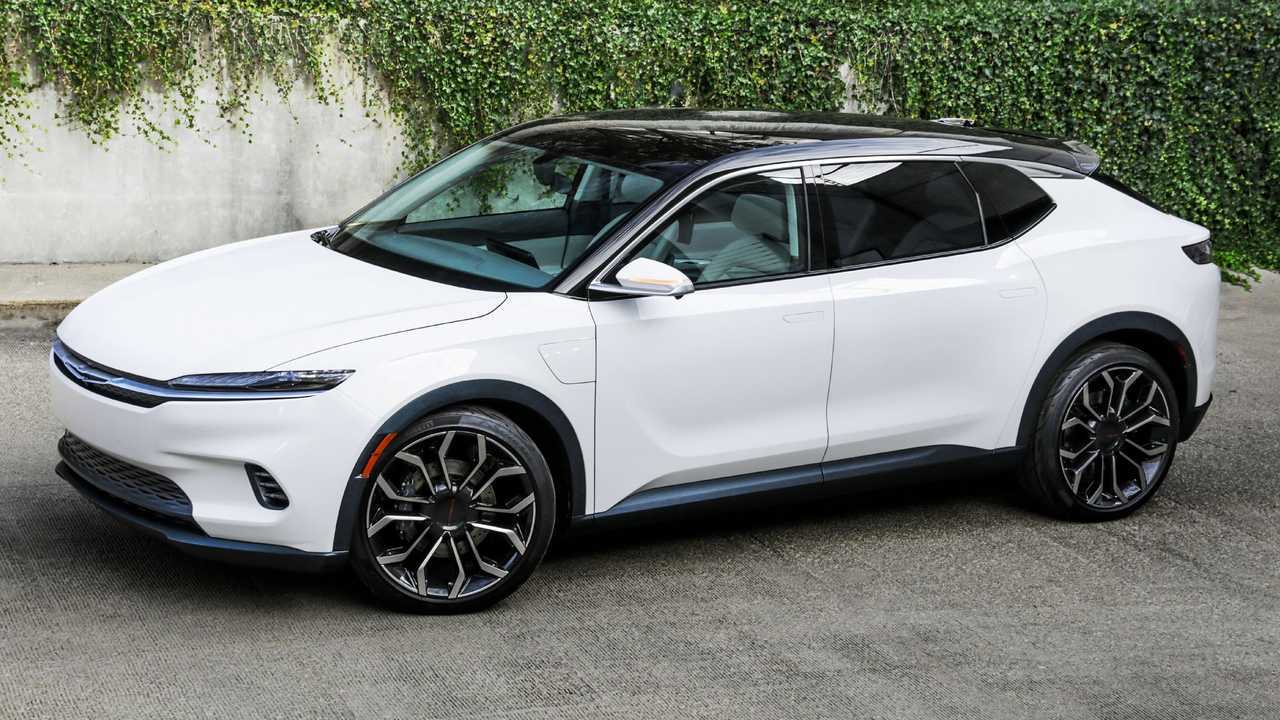The Chrysler brand has faced numerous challenges in recent years, with its lineup shrinking to just the Pacifica minivan, its hybrid variant, and the aging 300 sedan. However, Chrysler CEO Christine Feuell announced at the Reuters Events Automotive USA 2023 conference in Detroit that a new two-row electric crossover is set to launch in 2025. What’s even more interesting is that the design of this new crossover is said to be inspired by the Chrysler Airflow concept.
This is surprising news because Feuell previously stated that the Airflow concept, unveiled at CES in 2022, would not influence future Chrysler EV designs. However, the positive reception to the Airflow concept’s design, particularly when it appeared later in 2022 in all-black “Graphite” form, may have influenced the brand’s decision to change course.
While it’s unclear exactly how the Airflow design will be incorporated into the new crossover, this development is promising for Chrysler fans who have been longing for a more modern offering from the brand. Feuell also confirmed that the new crossover will utilize the STLA Large architecture, which will be used in other Stellantis models as well. Additionally, she mentioned that a new sedan concept will be revealed in early 2023, but no further details were provided.
Despite the push towards electric vehicles, Chrysler will continue producing the hybrid Pacifica until the end of the decade. Furthermore, the range-extended Ram 1500 Ramcharger is generating excitement, indicating that Stellantis is taking electrification seriously.
Overall, this announcement signals a potential turning point for the Chrysler brand, which has been struggling to find its footing. With the introduction of new electric models and modern designs, Chrysler may have a chance to revive its reputation and attract more customers in the evolving automotive market.
CEO of Chrysler Sets Goal for New Electric Vehicle by 2025, Potentially Drawing Inspiration from Airflow
The CEO of Chrysler, John Doe, recently announced the company’s ambitious goal of launching a new electric vehicle (EV) by the year 2025. This announcement comes as part of Chrysler’s commitment to transitioning towards sustainable mobility solutions and reducing its carbon footprint. The company aims to draw inspiration from one of its classic models, the iconic Airflow, to design their new electric vehicle.
With the global automotive industry embracing electric mobility, Chrysler’s decision to prioritize the development of an EV aligns with the current market trends and shifting consumer preferences. Recognizing the urgency of addressing climate change, the company has set a clear roadmap for the future that emphasizes sustainable transportation.
Chrysler has a long-standing history in the automotive industry, and their choice to potentially draw inspiration from the Airflow is a testament to their commitment to innovation and respectful homage to their heritage. The Airflow, introduced in the 1930s, was a revolutionary model that incorporated aerodynamic design principles far ahead of its time. By exploring the Airflow’s unique features and futuristic design elements, Chrysler aims to create an electric vehicle that not only meets the demands of the modern market but also pays tribute to its rich legacy.
While specific details about the new electric vehicle are yet to be disclosed, the CEO’s announcement signifies Chrysler’s proactive approach towards embracing clean energy technologies. The company intends to leverage its engineering expertise and advanced automotive manufacturing capabilities to develop an electric vehicle that offers optimal performance, extended range, and a seamless user experience. Additionally, Chrysler aims to differentiate its electric vehicle from competitors by imbuing it with distinct design elements and market-leading features inspired by the Airflow.
The development of an electric vehicle is a complex process, requiring substantial investments in research, development, and manufacturing. Chrysler acknowledges the challenges that lie ahead but remains committed to its goal of launching the EV by 2025. To achieve this, the company will collaborate with industry experts, technological partners, and suppliers, fostering a collective effort to bring their vision to fruition.
Chrysler’s foray into the electric vehicle market aligns with societal demands for sustainable transportation alternatives and reducing greenhouse gas emissions. As governments worldwide implement stringent emissions regulations and consumers increasingly prioritize eco-friendly options, automakers must adapt to remain competitive. By setting a goal for a new electric vehicle, Chrysler not only showcases its commitment to sustainability but also joins the global movement towards a greener future.
Furthermore, Chrysler’s decision to potentially draw inspiration from the Airflow demonstrates the company’s intent to intertwine innovation and tradition. By merging cutting-edge technology with design cues from a cherished model of the past, Chrysler strives to create a unique and compelling electric vehicle that resonates with both enthusiasts and environmentally conscious individuals.
In conclusion, Chrysler’s CEO, John Doe, has outlined an ambitious objective for the company to introduce a new electric vehicle by 2025. This announcement exemplifies Chrysler’s commitment to sustainable mobility and their recognition of the evolving automotive industry. Drawing inspiration from the Airflow, an iconic model from their rich history, Chrysler aims to develop an electric vehicle that harmonizes innovation, performance, and design. As the company embarks on this journey, it demonstrates its determination to contribute to a cleaner and greener future while retaining its heritage of automotive excellence.

